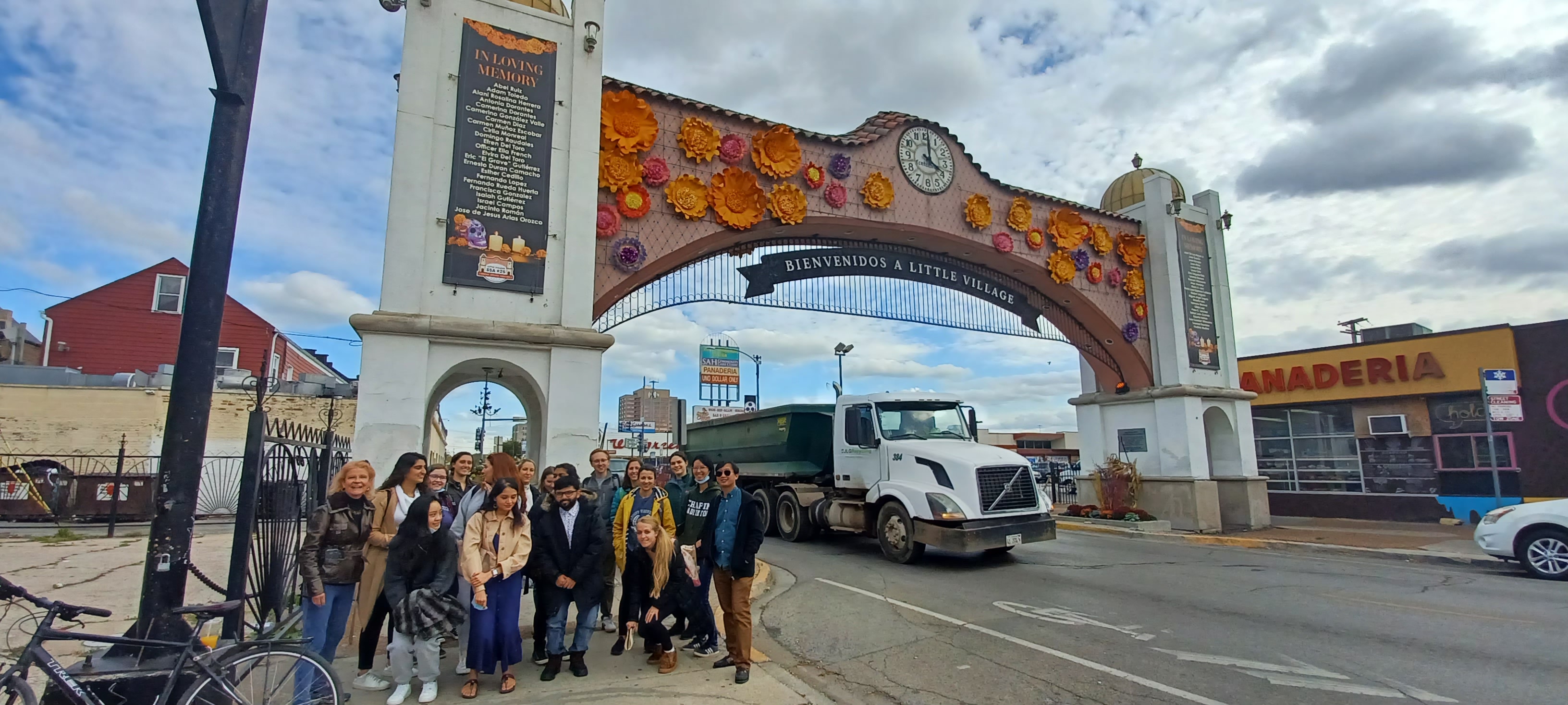By Carolyn Shapiro
By spring 2021, some neighborhoods around Chicago were harder hit by the COVID-19 pandemic than others.
Courtney Kueppers joined a team of fellow journalism students at Northwestern University to report on possible reasons for higher infection rates for South Side Weekly, a nonprofit publication covering communities on the South Side of Chicago. They found that a variety of pre-existing factors increased COVID vulnerability. Their series of stories revealed the lack of greenspace in the Little Village neighborhood, obstacles to healthcare access in Englewood and food insecurity in South Shore.
The students did the shoe-leather reporting for the project that the news organization, with its small staff and limited resources, couldn’t, Kueppers told an audience in May during a panel discussion for the Collaborative Journalism Summit, sponsored by the Center for Collaborative Media at Montclair University in New Jersey.
“They’re such a community-oriented newspaper, and they felt they had not had the opportunity as much to go out and talk to people,” said Kueppers, who is now a digital reporter and producer for public radio station WBEZ in Chicago. “So the pull of this collaboration was to go out and tell really community-focused stories.”
The collaboration took place through the Social Justice News Nexus and Social Justice Reporting specialization in the Medill School of Journalism, Media, Integrated Marketing Communications at Northwestern. The social justice program connects Medill graduate students with professional journalists at community news organizations. Students get hands-on experience while supporting small journalism outlets that cover underserved Chicago neighborhoods, ethnic communities and advocacy for racial justice and immigrant rights.
Medill launched the Social Justice News Nexus in 2013 with a grant from the Robert R. McCormick Foundation. In the Medill one-year master’s degree program, students who specialize in social justice reporting spend one or two quarters working on an in-depth project with an outside publication. The Northwestern school year is broken into quarters – fall, winter, spring and summer – rather than semesters.
“The goal was to really tap Medill’s expertise as a whole” – the students, as well as the faculty working behind them, explained Kari Lydersen, a Medill associate professor and co-director of the Social Justice News Nexus. “The main benefit was to the students, because it was really a great learning and relationship-building experience for them. Actually, at least two, if not more, got jobs directly as a result of those partnerships.”
 At the same time, the students are “providing real value to that community news ecosystem,” Lydersen added.
At the same time, the students are “providing real value to that community news ecosystem,” Lydersen added.
The students work solo or in teams of as many as 10 with a specific reporter and/or editor at the publication. Typically, 15 student reporters split up among five to seven media partners.
Medill provides a stipend of $5,000 to the partner publication, usually operating on a tight budget, to cover reporting costs and its staff’s time to work with the students. Many of the news partners use the money to pay the students, Lydersen said.
Students who did their projects through the Advanced Social Justice Reporting class that Lydersen taught also received credit, she said. Other students spent their free time working with their news partners and, in some cases, continued through the summer.
“The students want to do every possible thing they can,” Lydersen said. “They love opportunities. They love collaborations. They love getting clips.”
Some final projects have been shared with more than one news outlet. For example, a series of profiles about asylum seekers for Borderless, a Chicago-based magazine that highlights the stories of immigrants, also was published in Chicago Reader, the city’s longtime alternative newspaper that recently transitioned to nonprofit ownership.
For those running academic-news programs, a single model doesn’t always work but depends on the publication and its needs, Lydersen suggested.
“Every outlet is so different – every situation, student, class is so different,” she said. “It is hard to come up with a very clean, systematic thing and just launch it. I feel like just being creative and sort of flexible was kind of key to making it work.”
The Social Justice News Nexus is a component of the Metro Media Lab, which Medill started in 2020 with another McCormick Foundation grant. The lab provides community news organizations with consumer research, audience engagement data, technology tools and student-produced storytelling to help them sustain their operations. Tim Franklin, Medill’s senior associate dean, oversees the Metro Media Lab and other programs to support struggling local news organizations.
“These in-depth, solutions-oriented stories provide valuable reporting experiences for our students, which we care a lot about,” Franklin said as he introduced the panel at the Collaborative Journalism Summit in May. “But they also give news outlets stories that they might not have bandwidth to do otherwise. And Chicagoans ultimately benefit from this work, because we’re shedding light on important issues.”

